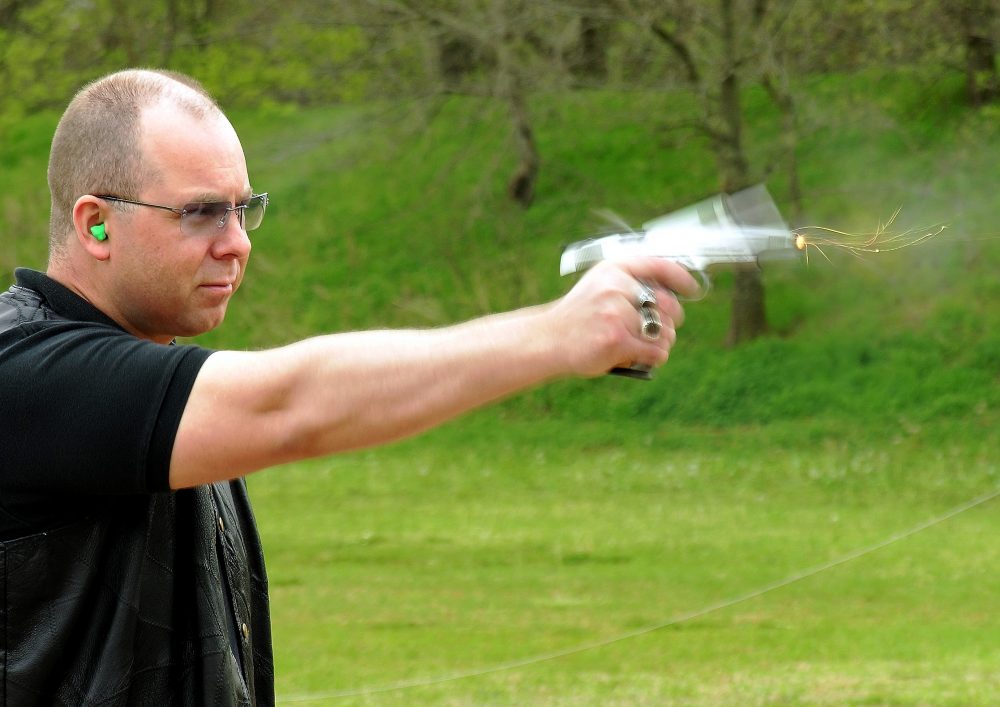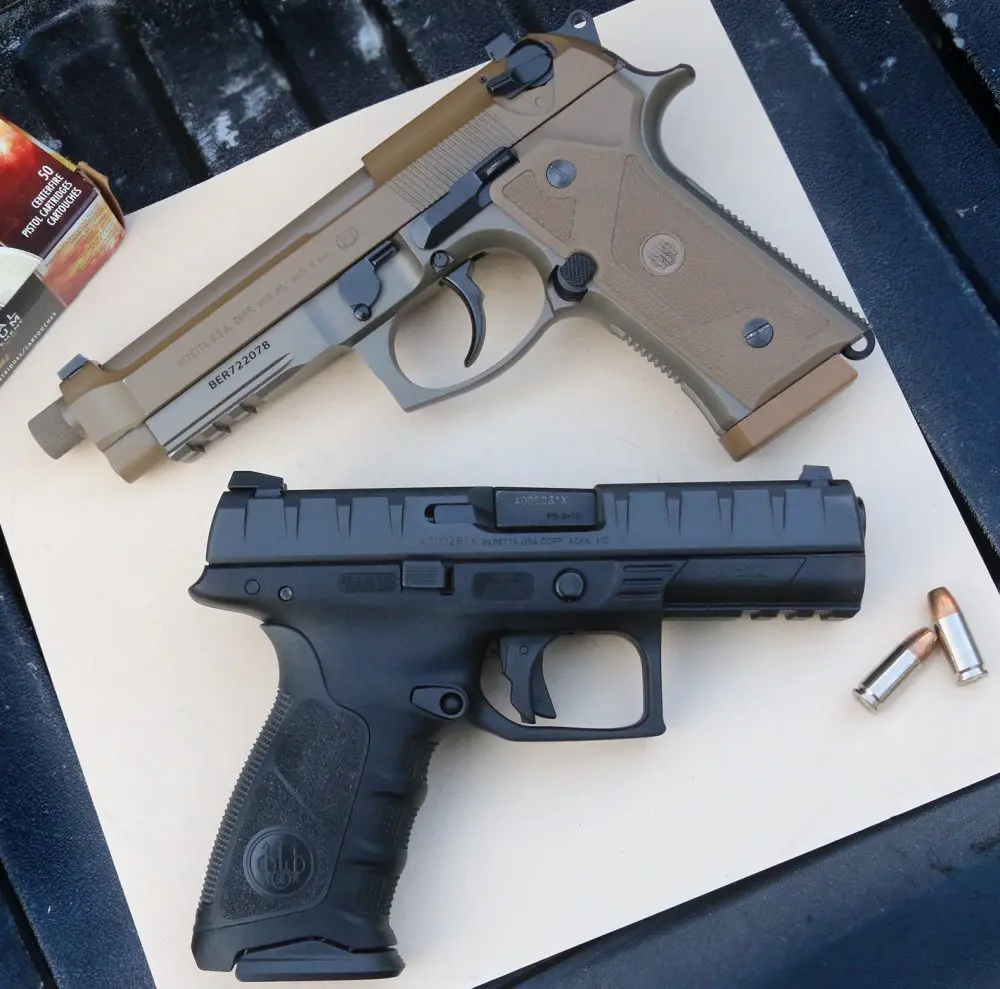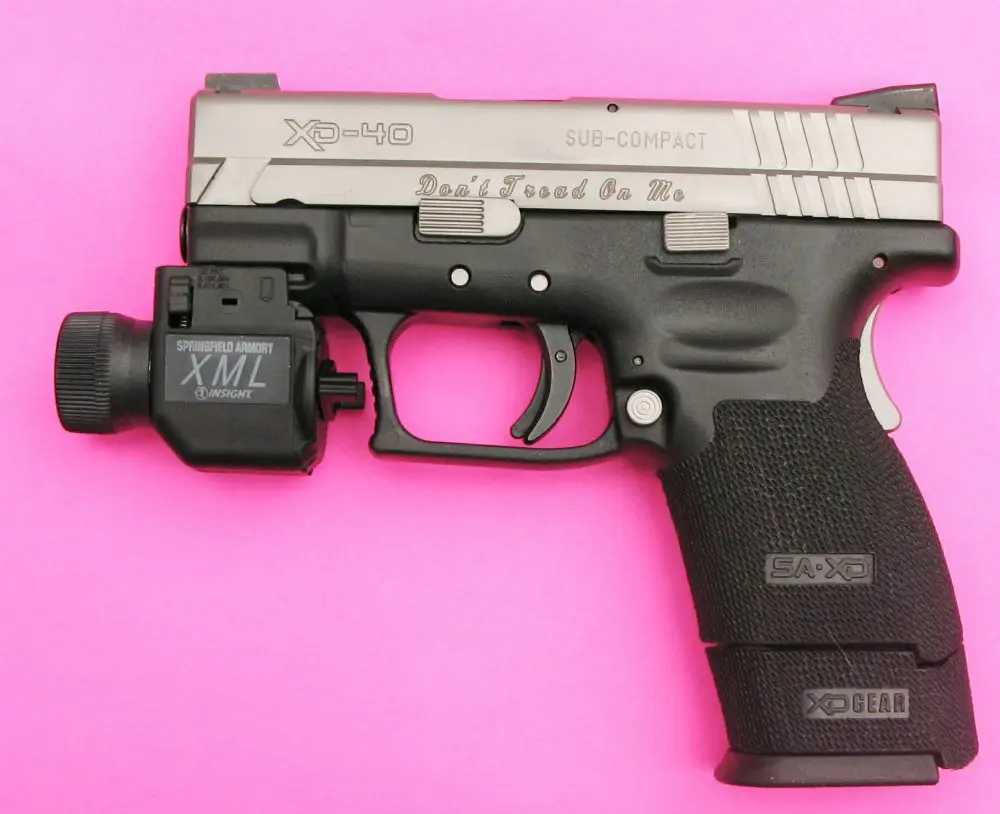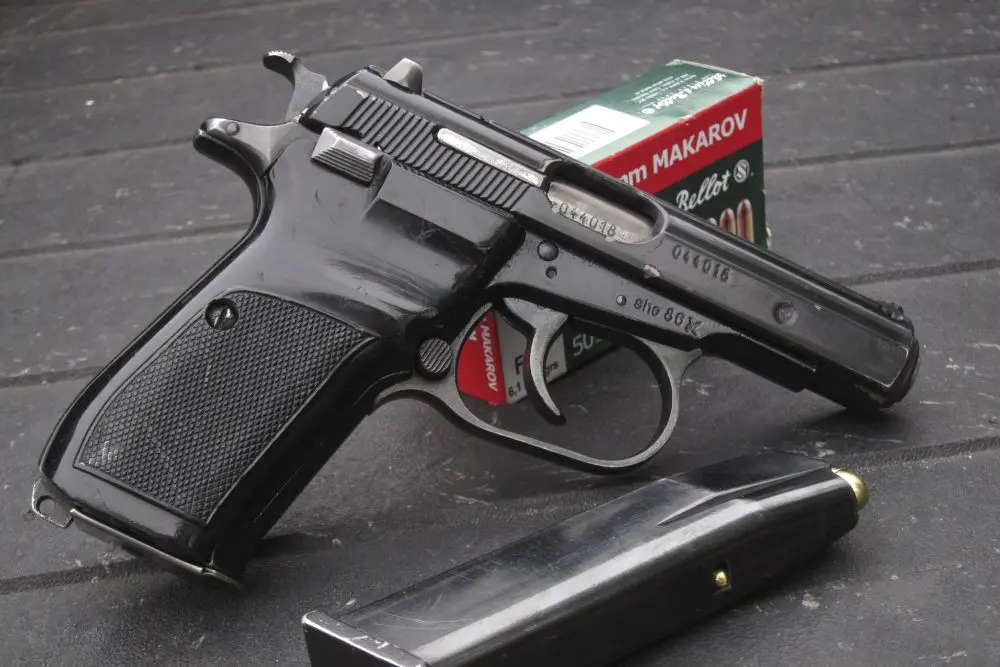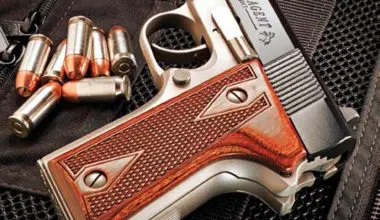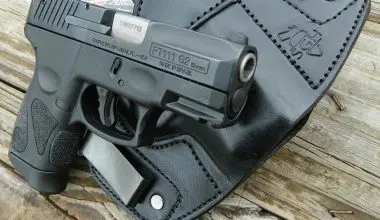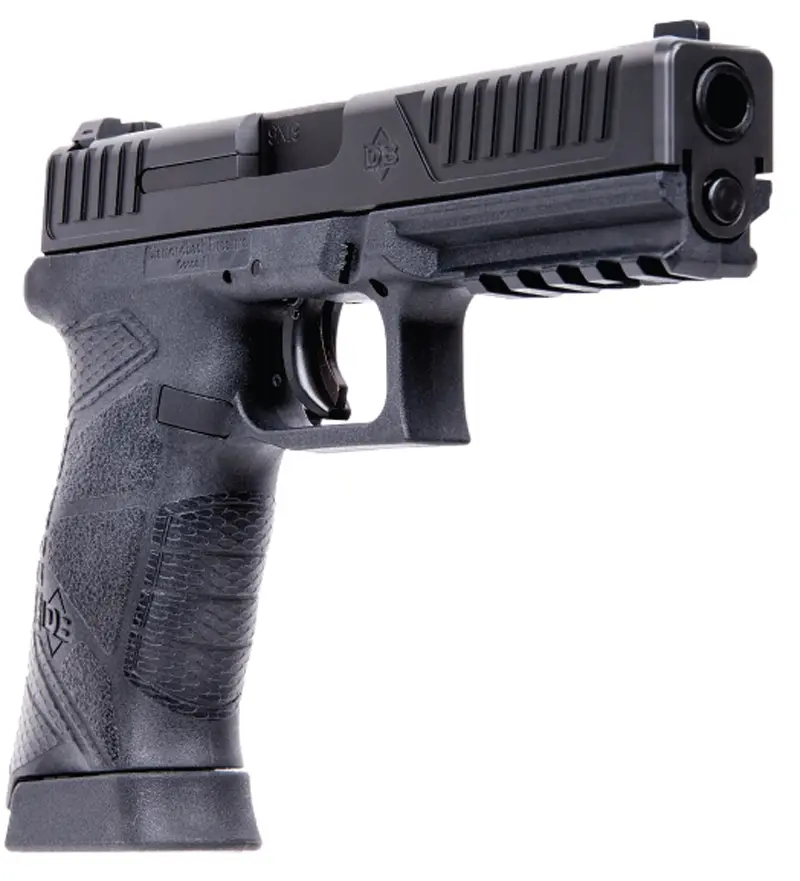
I am often asked if the shooting community needs another 1911, AR, polymer-frame pistol, etc. My answer is always the same one I give my wife when she asks if I really need another gun—absolutely! New firearms promote healthy competition among manufacturers, keeping prices low for consumers. Additionally, new technology often comes along with new firearm designs.
Diamondback Firearms™ recently introduced a new 9mm semiautomatic pistol: the DB FS Nine, a double-action striker-fired pistol. It is very “Glock-like” in both looks and function.
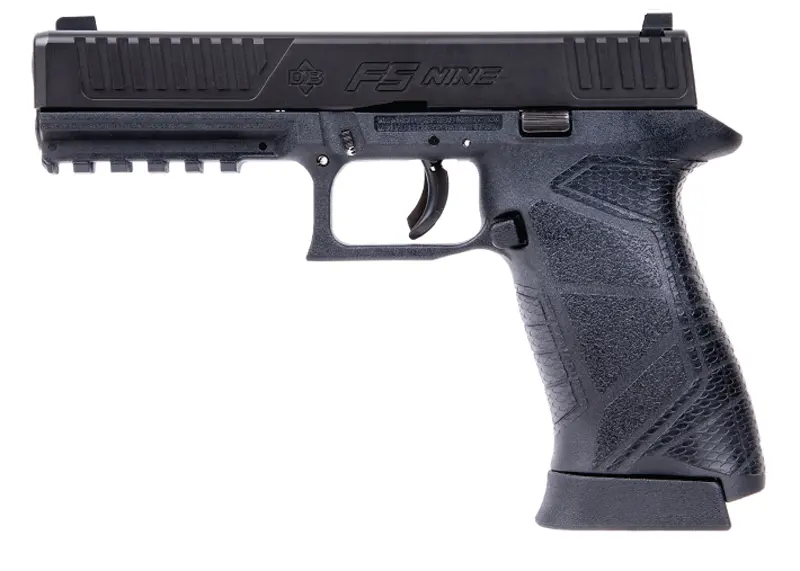
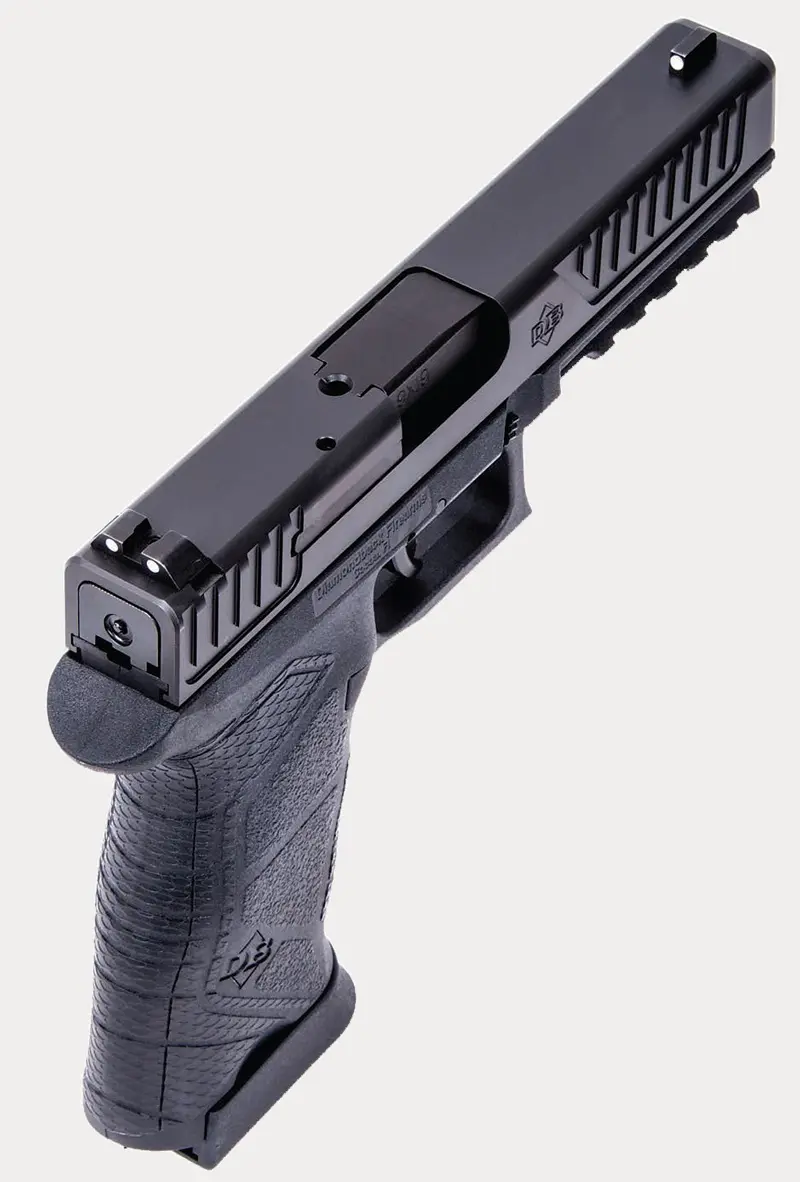
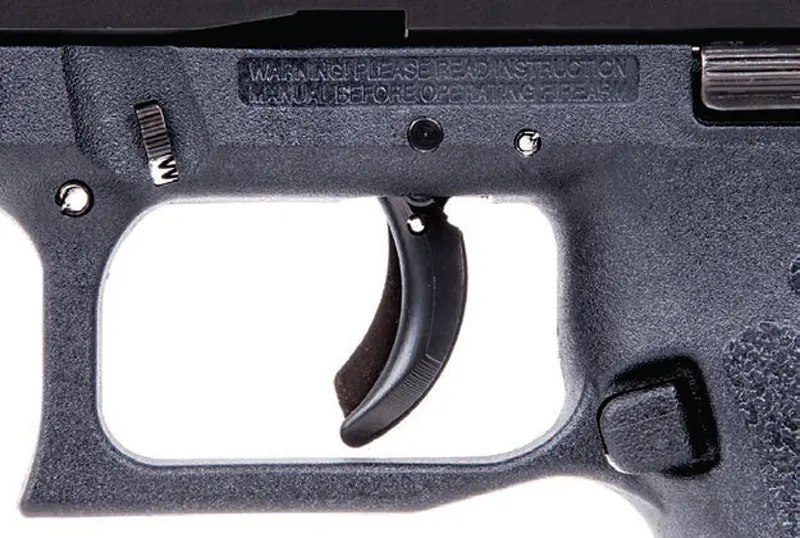
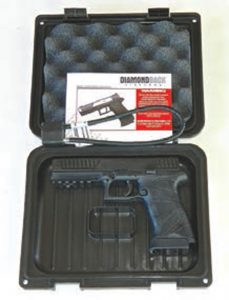
Table of Contents
FEATURE BY FEATURE
The stainless steel slide has a black Melonite finish with fore and aft cocking serrations. Steel sights are of the threedot type. The FS’s barrel is made from chrome moly steel and is 4.75 inches long. Sight radius is 6.25 inches. When the pistol is cocked, the striker protrudes very slightly from the rear of the slide. If cocked, the pistol can be checked both visually and tactilely, though it is not a loaded chamber indicator.
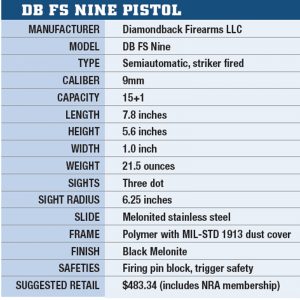
The polymer frame has slight palm swells on both sides and texturing on all four sides of the grip area. A small but effective beavertail is molded into the frame and should help keep all but the very largest and fattest hands from being bitten by the reciprocating slide.
The magazine well has a slight bevel on all four sides. The magazine release button, while easily operated, fits into a recess in the frame, which should help negate accidentally releasing the magazine. The magazine release is not reversible. Safeties include a firing pin block and trigger safety.
The dust cover on the frame features a molded-in rail for lights or lasers. The FS has five slots in the rail, which is more than most pistols: the Glock has one, S&W M&P has three, etc. This may or may not be important to you, but does allow more mounting options.
Diamondback Firearms’ website says the rail is “MIL-STD1913 Picatinny.” This verbiage is common in current marketing but not always accurate. On the FS, I tried a couple of lights that I know are made to the 1913 standard, and they did not fit. But the majority of mounts for lights and lasers are made to fit “universal” rail slots, so this probably doesn’t matter. Plus I don’t hold this against the FS because I have other pistols that also will not fit a true 1913 mount.
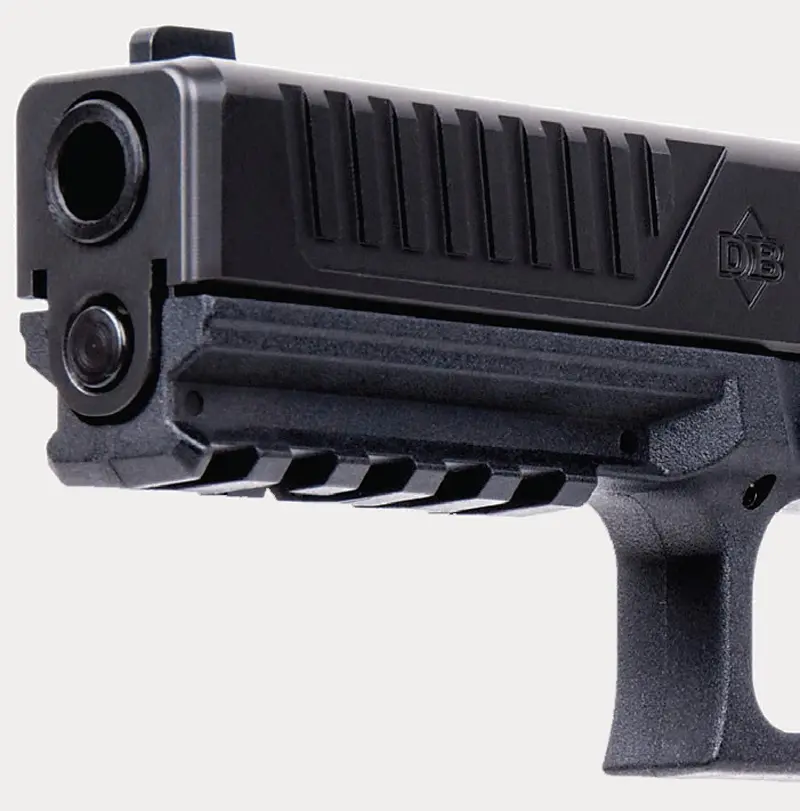
At the bottom of the frame, there is a scallop on each side by the magazine well. While these scallops allow the shooter to more easily grasp and remove a difficult-to-remove magazine, the magazine that came with the pistol ejected like it was rocket powered.
Polymer-frame pistols must have metal rails molded into the frame for the slide to run on. These rails are made from steel on most pistols I have evaluated. The frame rails on the FS are aluminum.
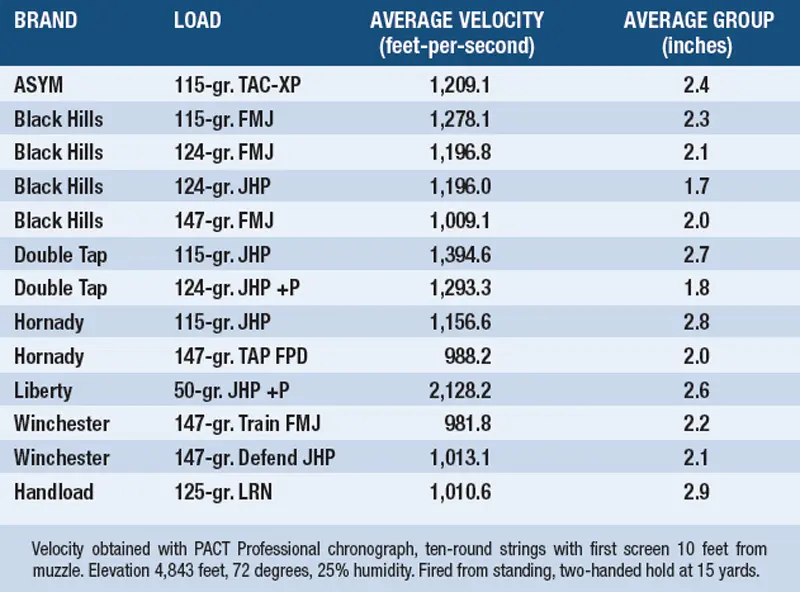
MAGAZINE
Magazine capacity is 15 rounds. Witness holes on the back of the magazine are at 5, 10 and 15 rounds. According to my calipers, the FS’s magazine measures .811 inch at its widest point. My S&W M&P9 is .857 at the widest point, holds 17 rounds, and is the same length as the FS mag. Apparently that .046-inch difference is enough to result in the disparity in capacity. I admit that two rounds do not sound like a lot. But consider that this is actually a difference of 13.5% compared to the M&P, Glock 17 and Ruger SR-9, to name a few.
I’m not trying to nitpick the FS, and I’m no engineer by any stretch of the imagination, but it seems possible that the FS could be brought up to the same capacity as its competition without too much trouble.
The pistol comes in a lockable hardsided case and ships with a single magazine, gun lock and manual.
As I’ve pointed out in the past, one of my pet peeves is duty-class firearms that come with a single magazine. Though magazines may be listed as “accessories” on a manufacturer’s website, that is a misnomer. They are an integral part of the firearm’s function.
I have seen numerous magazinerelated malfunctions on the range. If a mag goes Tango Uniform on the street, you are left holding something that is a distant second to a Louisville Slugger. My personal preference is for manufacturers to ship a gun in a cardboard box and put the savings from the nice lockable case into another mag. Your mileage may vary.
Fieldstripping is performed exactly in the same manner as the Glock.
HOLSTERS, OR LACK THEREOF
As this is written, commercial holsters are not yet available for the FS, but likely will be soon. I initially thought the DB FS Nine may fit a Glock holster, but it won’t, as the rail on the FS is a bit larger than the Glock, as is the trigger guard.
Anyone who has been shooting for long has at least one holster box containing holsters that were tried and, for one reason or another, discarded in favor of something else. I have several such boxes.
Digging through one of these boxes, I found an old Kydex holster, the manufacturer of which I have long since forgotten. Proceeding slowly with a heat gun and trial and error, I came up with a holster that would—at least for the purposes of this evaluation—work with the FS.
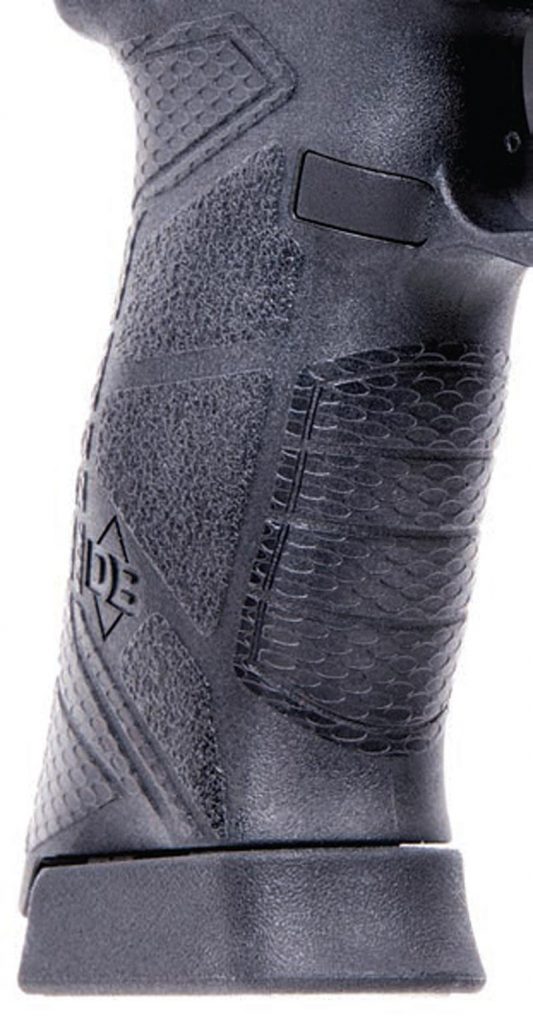
RANGE EVALUATION
I took the DB FS Nine to the range with 12 factory loads and one handload, with bullet weights ranging from 50 to 147 grains. Loads were fired for velocity using a PACT Professional model chronograph.
Coming out on top in the velocity category was the Liberty Civil Defense 50-grain copper monolithic hollowpoint fragmenting round, sizzling along at an average of 2,128.2 feet-persecond (fps). The slowest was the Winchester 147-grain FMG Training round at 981.8 fps.
On a side note, the Winchester Training round and Winchester Defense round (both 147-grain bullets) clocked at similar velocities and shot very close to the same point of aim.
Firing from standing with a twohanded hold at 45 feet, the FS showed acceptable accuracy, with all loads going into less than three inches. The FS showed a preference for 124-grain loads. The most accurate was Black Hills 124-grain JHP, with a 1.7-inch tenround group. The Double Tap 124-grain load was right behind, with a 1.8-inch group.
I’m sure much better groups could be obtained from a rest, but I have not yet heard of a self-defense shooting where a rest—complete with sandbags—was available. This is not a target pistol, but rather a pistol made for self-defense, and I evaluated it as such.
At 25 yards, the FS easily kept all rounds inside the “A” zone of an IPSC target. Trigger pull was fairly good, breaking consistently at just over five pounds with a very short and positive reset. I had two failures to fire from light primer strikes on my first outing with the FS—one with a handload and the second with a Winchester Training round.
I performed a few drills using my “custom” holster, and at the end of the first day I had put just over 300 rounds through the FS. On a subsequent trip to the range, I limited myself to practical shooting such as firing from around barricades, on the move toward and away from the target, lateral movement, and multiple targets.
I had not lubricated the pistol before firing. At about 500 rounds, I could feel it getting a bit sluggish. Not excessively so, but enough that I field stripped and lubed it just like I would a Glock, using Slip 2000 EWL. I then resumed firing.
I put a grand total of about 700 rounds downrange through the FS. Besides the two light primer strikes mentioned earlier, I experienced no other stoppages.
SUMMARY
Despite a firm grip, the pistol shifted around a bit when firing quick multiple rounds. I think the FS would benefit from more aggressive texturing on the grip. I was curious how the aluminum frame rails would hold up with the steel slide. Although 700 rounds are not a lot, the rails showed no wear whatsoever.
The DB FS Nine has a suggested retail price of $483. Based on what other 9mm pistols are going for, the “street price” will likely be around $350 to $400.
